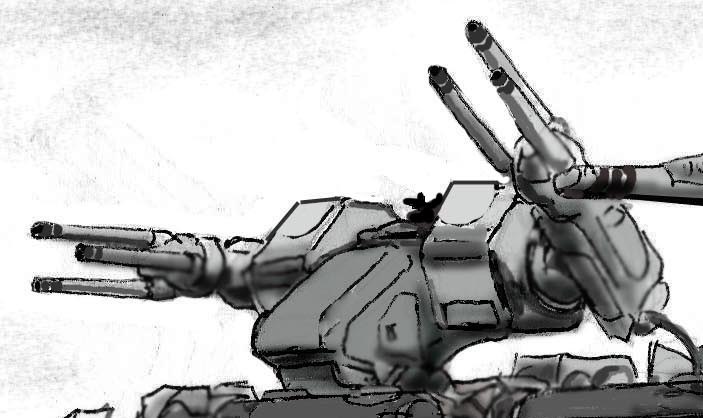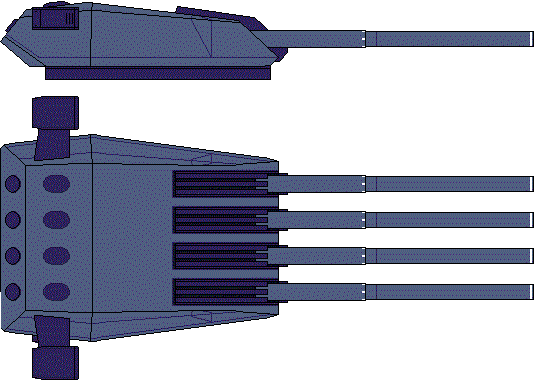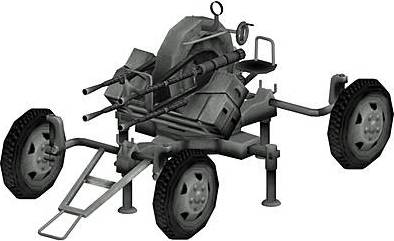 Plenipotentiary Council. | Purpose Trains. |  Plenipotentiary Council. | |||||||
|---|---|---|---|---|---|---|---|---|---|
The roads of Earth were little more than black pebble paths, and not very good ones at that. To aid over-land trade and travel, the REF built rail roads connecting major population centers along former major highways.
The decision to use hydro-cell rather than standard diesel engines were also cost-based; Though diesel engines are cheaper, and hydro-cell fuel can be synthesized from diesel fuel, the REF already had a large supply of hydro-cell engines on hand ready to use, and a large stockpile of hydro-cell fuel. Diesel engines big enough to use for trains were around, but far too many of them would have required far too much work to make them useable; There just wasn't enough engines to make it worth the troubles. To support this plan, the REF was obliged to build an extensive railroad system, and before the decade was over had actually built a system where no area, with the exception of certain "protected" areas (such as old-growth forests) were more than 50 miles from a track; "One Hour To The Train" was the slogan of the program. Once built, to maintain the system the REF was obliged to make certain deals with various factions of Terra, including some that had been considered "terrorist" groups (such as the Brotherhood of Steel affiliated The Anarchists). These groups promised to maintain and protect the network as long as the REF supplied them with the materials to do so. Train components, in order of importance, were and still are: 02a.Tracks : Two tracks, set 4 ft 8.5 in apart, and joined by ties (typically pressure treated wood, though pre-stressed concrete, some are steel, and some commuter tracks are composite plastic). 02b. Locomotive: Provides the power for entire assembly to move. Usually only one is found on a given train, though this is by no means mandatory, and double, triple, and even quadruple locomotives can be found; Additionally, the locomotive is usually found at the lead end of the train (at least at speed), though in some cases a locomotive can be found at the end of the train (this is typically in cases where backing is already known to be needed as a result of the area to be transited and/or cargo carried). Without the two above elements, there is NO train. 03. Flatbed Cars: Flatbed cars can very literally be converted to anything (though not necessarily comfortably, safely, or efficiently, especially with passenger and livestock). 04. Passenger Cars: Designed specifically for transporting people safely and efficiently. Some are outfitted with mess (dining) areas, some with berthing (sleeping) cabins, but most are outfitted as rows of seats. Not to be confused with Commuter Cars. Typically double-decked. 05. Car-Carriers: Double-decked cars originally designed to carry automobiles; These had an importance outside of this since they were so common and could be converted to livestock carriers by the addition of partitions as needed. 06. Livestock Cars: Designed to carry livestock. 07. Fuel Cars: Tank cars filled with fuel for extended range. Only fuel cars are permanently fitted with tanks; Otherwise flatbed cars are used (with the liquid loads in tank containers). 9. Commuter Cars: Local urban rail public transportation system; Lower capacity and lower speed vehicles that use electric engines integrated into the passenger cars. These systems typically follow the local automobile roads to some degree. 08. Armored Cars: Any train protected by armor. Typically only certain cars are armored. 09. Draisines: Armed and armored cars; Typically these had autocannons. The UWA preferred a version armed with 01 M-18 Turreted Rail Launcher and 02 M-16 Anti-Aircraft Turrets. Technically "draisine" refers to an auxiliary rail vehicle used to transport crew and material necessary for the maintenance of railroad. However, the term is also applied to armed trains. MDC By Location: Exact MDC will vary based on many factors, including who it was made by, the exact model, and what they made it for. Combat version have more MDC, up to 10 times as much. | |||||||||
| Locomotive- Flatbed Cars- Passenger Cars- Car-Carriers- Livestock Cars- | Varies, 500-1,500 50 150 200 100 | Fuel Cars- Commuter Cars- Armored Cars- Draisines- | 200 150 Varies, 150-500 Varies, 150-500 | ||||||
| Speed And Statistical Data: | |||||||||
| Average Speed: 100 mph. Average Endurance: 1,000 miles before requiring refueling. Average Cargo Capacity: 1 million tons. passengers, chattel, and goods can be carried on the same train, however the types of cargo are not supposed to be combined directly. Cargo: Up to 90,000 TONS of cargo can be carried. | Power System: Hydro-Cell. Drive Systems: Water Jet (sucks water in front, spits it out under high pressure and heat out the back). Cost and Availability: An engine runs about 60,000credit; Cars run around 10,000credit each. New engines can be delivered in 2 to 3 weeks; New cars can be delivered next day. | ||||||||
| Weapons System: If armed, the weaps will generally be limited to defensive only; Versions armed with L-02a Rail Launcher and M-16 Anti-Aircraft Turrets are relatively common. A heavily armed version has also been seen with an M-18 Rail Launcher turret mid-deck and 02 M-16 Anti-Aircraft Turrets (one forward one aft). However, the main defense of a train is the fighters and Destroids escorting them. | |||||||||
| 1. Fighters And Destroids: This is the main defensive system for all trains; the ability to strike back just as hard, and often before the train is even in range to be struck, has a generally chilling effect on a would-be attacker. Depending on the importance of the train, as many as 100 escorts could be arranged, though there's rarely more than 3. An escort mission's orders are to shoot first and ask questions later- If they see it, they attack. No exceptions. 2. Model-16 Anti-Aircraft Turret: This is the main mounted weapon of a draisine; Each one has 02 of these anti-aircraft turrets, one at each end  . The turret is based on the torso of the MKD-401 Mecha Knight Destroid, and has 4 types of weapons: A pair of Laser Cannon "arms," "shoulder" missile launchers, a "belly" 20MM, 5-barreled Gatling guns for anti-missile defense, and a head laser turret. However, the PBC and MRM launcher were not kept due to cost concerns. SPECIAL BONUS: The turret has it's own built-in fixed forward radar, giving it +2 to strike. Loss of this radar negates this advantage, but the guns and missiles can still be trained by information from the Combat Information Center. . The turret is based on the torso of the MKD-401 Mecha Knight Destroid, and has 4 types of weapons: A pair of Laser Cannon "arms," "shoulder" missile launchers, a "belly" 20MM, 5-barreled Gatling guns for anti-missile defense, and a head laser turret. However, the PBC and MRM launcher were not kept due to cost concerns. SPECIAL BONUS: The turret has it's own built-in fixed forward radar, giving it +2 to strike. Loss of this radar negates this advantage, but the guns and missiles can still be trained by information from the Combat Information Center.As he need for armored trains declined, the M-16 turrets were converted to M-14 turrets, then to L-02 turrets. Eventually all of the draisine were taken out of service permanently. | 3. Model-18 Rail Launcher Turret: 3 MRM Rail Launchers in a normal, vaguely tank-shaped turret.  Only 1 type of missile is currently in use, the SSRA-483 HEAP II (second generation High Explosive Armor Piercing) missile. Like normal land-based rail launchers these M-16 turrets do not have auto-loaders. However, they do have loading assistance mechanisms. Only 1 type of missile is currently in use, the SSRA-483 HEAP II (second generation High Explosive Armor Piercing) missile. Like normal land-based rail launchers these M-16 turrets do not have auto-loaders. However, they do have loading assistance mechanisms.Purpose: Offensive/Anti-Ship/Fortress MD: 4D6 times 10 Blast Radius: 60 feet Maximum Range: 80 miles Rate of Fire: 3 per launcher per melee Payload: 200 MRMs Bonus: Using Helicopter, fighter, or ships targeting system the missile is +3 to strike. Using a combination of 2, it gains a +5 (only 2 can be combined).  4. L-02a Rail Launcher: Two L-02a turrets are mounted atop the M-16 turret. They use four specially engineered heavy rail gun barrels mounted on a carriage. The LIMA-02 is fed from belts and is effective both in a low-altitude air defense role and in a ground-role. The system is optically or radar controlled and can be installed on armored vehicles. Designed for Micro-Missiles. 4. L-02a Rail Launcher: Two L-02a turrets are mounted atop the M-16 turret. They use four specially engineered heavy rail gun barrels mounted on a carriage. The LIMA-02 is fed from belts and is effective both in a low-altitude air defense role and in a ground-role. The system is optically or radar controlled and can be installed on armored vehicles. Designed for Micro-Missiles.Purpose: Heavy Assault. Weight: 1.2 tons Damage and Range: Varies by type used. Rate Of Fire: Per gunner's attacks per melee. Payload: 20 per magazine (loads from the sides) per barrel (80 total). Bonus: Either quadruples the normal range of the missile OR triples it and adds +3 to strike. Cost and Availability: 10,000credit each; By Assignment Black Market Cost: Not available | ||||||||
| A) Laser Cannons (6): This is the main weapon of the turret. NOTE: These guns fire in tandem, like pom-pom guns. If one barrel is damaged, reduce the damage and rate of fire FOR THAT ARM by a third. Each gun must be targeting the same object as the other (can not be independently targeted). Purpose: Anti-Aircraft/Ship MD: 2D10 short burst, 4D10 medium burst, or 6D10 long burst. Rate of Fire: 8 short, 4 medium, or 2 long bursts per arm per melee per gunner's attacks per melee. Range: 10 miles payload: Unlimited | B) MRM Launcher Shoulders (2): A pair of MRM launchers mounted at the approximate position as the shoulders. Generally anti-aircraft and anti-armor missiles are used, though smoke and high explosives are typically loaded as distractionry weapons and for training. Purpose: Anti-Ship/Aircraft Missile Type: Medium Range Rate of Fire: Volleys of 1, 2, 3, 4, 6, 12 or all 24 per gunners attacks per melee. payload: 24 per launcher (48 total); Reloading takes about 5 minutes for a full reload (10 missiles take about 1 melee) and is generally not feasible in the field (wait until you've reached a rail yard or depot). | ||||||||
| C) 20MM Vulcan Gatling Gun: This gun is actually automated. The gunner activates the weapon by flipping a red switch under a cover on the control panel. The gun can NOT tell friend from foe, only whether an object is closing with the ship and how fast it is moving. If it meets certain criteria, the gun fires, throwing a wall of lead that either shreds the missile OR causes it to prematurely detonate. Purpose: Anti-Missile Defense. MD: 5D6 per 10 round blast. Rate of Fire: Up to 6 per melee. Range: 6,000 feet payload: 6,000 rounds (600 bursts). Reloading takes 20 minutes. | D) Defensive Head Lasers (5): The M16 AA Turret uses the Zulu head used on the Mecha Knight, a five-barrel variant of the RDF VF-1 series head. Though the Zulu would not be used on the final VF-1 design, it was used in the M-16 AA Turret as it provide a little more power to target. they are mostly used as anti-missile and infantry defense. Purpose: Anti-Aircraft, missile, and infantry defense. MD: 1D6 per barrel; A total of 5 barrels are available. Rate of Fire: per gunner's attacks per melee. Range: 200 feet payload: Unlimited | ||||||||
| Features: | |||||||||
|
| ||||||||
None. What the trains have is the ability to move. | |||||||||


